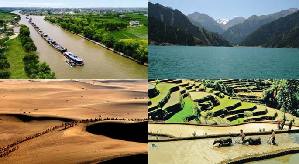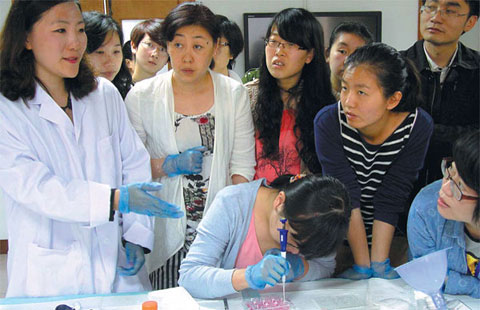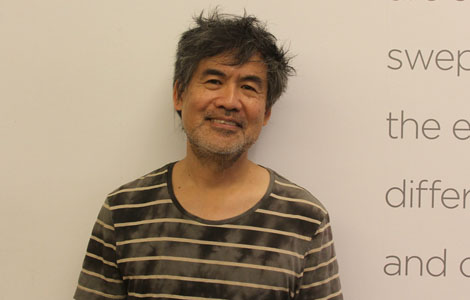Cities along canal eye new preservation
Updated: 2014-06-24 10:10
By Yan Yiqi in Hangzhou, Cang Wei in Nanjing and Zhao Ruixue in Jinan (China Daily)
|
||||||||
Relics-protection authorities along the Grand Canal see the listing of the world's longest artificial waterway as a World Cultural Heritage site as a new starting point for its preservation.
After Sunday's announcement that the canal had been designated by UNESCO, Hangzhou declared that the city will create a system to protect and manage the canal to ensure that it will survive for another 2,000 years.
Of the total 58 historical sites of the Grand Canal, 11 of them are in Hangzhou.
Gao Xiaohui, deputy director of the Hangzhou Grand Canal Protection Committee, said the city has made three promises regarding the protection of the canal.
 |
| Special: World Heritage 2014 |
"The city will not charge for any museums along or about the canal. The cultural relics will be protected from being ruined, and no company or individuals will be allowed to encroach on the public resources of the canal," he said.
Gao said the city will also make efforts to turn the canal into a world-class tourism spot.
"Getting listed as a World Heritage Site is not our ultimate goal. There is still a long way for us to go to protect the canal. Hangzhou will use this successful experience as a starting point to try to protect this cultural heritage generation after generation," he said.
The Grand Canal, the world's longest, reaches 1,776 kilometers to connect the Yangtze River with the Yellow River. Its oldest segments date to the 5th century BC.
Starting at Beijing, the canal first goes through Tianjin and then Hebei, Shandong, Jiangsu and Zhejiang provinces to Hangzhou, southwest of Shanghai.
Hangzhou's canal management started as early as the 1980s by linking the canal with the Qiantang River. Since 2002, canal renovation and protection has been listed among the top 10 construction projects for the city.
"To better protect the canal, we will speed up promoting legislation for heritage protection in Hangzhou," Gao said.
Xie Zhixiu, head of the Shandong Provincial Cultural Relics Bureau, agreed that legislation is a good way to ensure preservation "in a sustainable way with the ultimate aim of benefiting people".
Shandong, which is home to 15 historical sites of the country's total 58, is the first province that has created regulations to protect the historical sites along the Grand Canal.
Effective since October, the regulations state that no projects will be constructed in protected areas except those necessary for flood control, channel dredging, facilities maintenance and water transportation that are approved by authorities.
The province is working on a plan that builds the canal into an attraction featuring strong historical culture - one jewel in a necklace sparkling with historical sites, Xie said.
Gu Feng, the honorary curator of Yangzhou Museum, which is located in one of the main riverside cities along the Beijing-Hangzhou Grand Canal, said that joint efforts of the provinces are essential.
Zhu Minyang, mayor of Yangzhou, said that the environment around the canal has been greatly improved during the eight years of waiting for the world heritage designation.

 Council of Fashion Designers of America Awards
Council of Fashion Designers of America Awards
 Fan Bingbing, first Chinese actress in Barbie Hall of Fame
Fan Bingbing, first Chinese actress in Barbie Hall of Fame
 Awarding ceremony of 2014 hito Pop Music held in Taipei
Awarding ceremony of 2014 hito Pop Music held in Taipei
 Zhao Liying's photo shoot for Children's Day
Zhao Liying's photo shoot for Children's Day
 'Taken 2' grabs movie box office crown
'Taken 2' grabs movie box office crown
 Rihanna's 'Diamonds' tops UK pop chart
Rihanna's 'Diamonds' tops UK pop chart
 Fans get look at vintage Rolling Stones
Fans get look at vintage Rolling Stones
 Celebrities attend Power of Women event
Celebrities attend Power of Women event
Most Viewed
Editor's Picks

|

|

|

|

|

|
Today's Top News
Putin, Obama discuss Ukraine crisis over phone
US-China ties get a boost from grassroots
Tsunami warning after 8.0 quake
Guinness record for plank
Criticism by ex-US official dismissed
PLA official rips Tokyo's 'historical distortions'
32 terror groups busted in Xinjiang
Chinese paper plant to employ 2,000 by 2020
US Weekly

|

|








